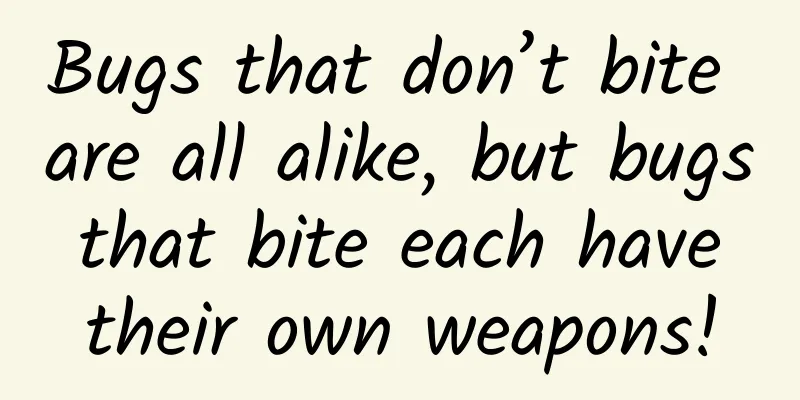They would rather rob than hunt! This is a beautiful pirate bird in the Caribbean

|
Located in Old Havana, Cuba, Morro Castle is one of the largest, oldest and best-preserved ancient defensive buildings in the Americas. In 1589, Spanish colonists built this castle to protect their interests in the Caribbean and resist the invasion of pirates. The majestic Morro Castle | pxhere.com Although when we talk about the Caribbean now, we will think of the famous fantasy movie "Pirates of the Caribbean"; but if we empathize with the Spanish colonial rulers or ordinary people living in Cuba, the pirates funded by Britain, France and the Netherlands were rampant in the Caribbean and keen on plundering, and they would drink some rum in Havana, which is known as the "key to the New World and the fortress of the West Indies" - isn't it quite annoying no matter how you think about it? French pirate Jacques de Soares sacks and burns Havana | Theodor de Bry "Flying Champion" Robs for a Living Fortunately, today the Caribbean Sea is blue and clear, and the beautiful tropical scenery has made Cuba, known as the "Pearl of the Caribbean" , a first-class tourist and health resort . Pirates of the Caribbean have long become a distant legend. Street scene in Havana | pixabay.com However, there is still a powerful and predatory creature in this ocean, and that is the famous pirate bird - the Magnificent Frigatebird (Fregata magnificens)! The Magnificent Frigatebird is the largest and longest-beaked of the five frigatebird species in the world. They are distributed in the Americas and belong to the genus Frigatebird in the family Frigatebird in the order Pelecaniformes. They are closely related to the blue-footed booby (Gorgonidae), which is famous for its cute expression. However, the blue-footed booby is one of the most common "victims of frigatebird robbery." Male Magnificent Frigatebird | Andrew Turner / wikimedia commons The Magnificent Frigatebird is about 1 meter long with a wingspan of more than 2 meters, but weighs only 3 kilograms (males are about 1,200 grams, females are about 1,700 grams). Their huge and light body structure makes them very good at flying and hovering in the sky for a long time. A single bird flying alone is like a swaying kite, and a group of them patrolling over the sea is like a group of fighter jets waiting for an opportunity to attack, which is very oppressive. A "battle formation" of beautiful frigatebirds flying across the sky | Félix Uribe / wiki commons The feathers of the Magnificent Frigatebird are not waterproof, and its legs and feet are short and without webs, so it cannot fall into the water and get its feathers wet while hunting. Therefore, it often waits patiently at sea for the results of other hunters’ prey—these hunters include boobies, seagulls, and even some birds of prey—then swoops down with its superb flying skills, forcing the victim bird to spit out the fish and shrimp in its mouth, and then dives to grab the fallen food . Frigatebirds attacking a bald eagle: their second favourite target | Neil Winkelmann / birdnote.org Not only do they plunder on the sea, they also guard the breeding grounds of other birds (such as brown boobies), snatching food from the bird parents for their children, and even snatching and eating their own chicks. Therefore, during the breeding season, female frigatebirds must carefully watch over them and not neglect them for a moment. What a cruel and ruthless "ocean thief"! The "domineering president" made his debut by relying on his appearance Although the beautiful frigatebird has a domineering personality and is accustomed to "robbery", it is still very popular among people. This is of course because of its agile posture and beautifully colored throat sac . It's not just Cubans who like them. Antigua and Barbuda's national bird is also the Magnificent Frigatebird. In the Pacific, the Magnificent Frigatebird is on the national emblem of Nauru and the flag and national emblem of Kiribati. Nauru's national emblem, with a female frigatebird standing in the lower left corner (you'll understand!) | wikimedia commons Frigatebirds are one of the few seabirds with distinct male and female sexes. The male is black with a scarlet throat, while the female is black with a white chest. The sub-adults (juveniles) have white heads and chests. Female Magnificent Frigatebird | Charles J. Sharp / wiki commons During the breeding season, male frigatebirds eager to court mates are particularly eye-catching - they desperately inflate their colorful throat sacs, swelling them into a huge bright red "balloon". The brighter the color of the balloon, the more it reflects adequate nutritional intake and excellent genes . "Singing loudly" is a common posture of male birds when they are courting | Andrew Turner / wiki commons While other birds try to reduce air resistance by shrinking their throat sacs during flight, male frigatebirds seeking mates fly and circle in the air with huge "red balloons", showing off their excellent flying abilities to females and sending out sexy signals . Like singing "Confession Balloon" silently (Hey!) | Lip Kee / wiki commons Not a "pirate", but a coral reef restorer Cuba is about the same size as Florida and is the most ecologically diverse island in the Caribbean due to low agricultural and industrial development and low population density. It has more than 10,000 unique plant and animal species, maintains a healthy genetic pool of marine species, and is also very important for bird migration in North America. The Cuban Polymita spp. is probably the most colorful and colourful tree snail in the world | Di Bruno D'Amici / fenomenologia.net As the largest island nation in the West Indies, Cuba's coral reefs account for one-third of all the coral reefs in the Caribbean islands and are an important resource for global coral reef research . However, like most of the disappearing coral reefs around the world, Cuba's coral reefs are severely affected by changes in water temperature, invasive plants and animals, pollution and overfishing. Corals on the Cuban seafloor | q. phia / wiki commons Ecologists have found that climate warming and high sea temperatures can cause coral bleaching, but if there are seabirds living on islands near coral reefs, the coral's ability to recover can be significantly improved . Although seabirds cannot directly help coral reefs resist bleaching, they can nourish coral polyps through their nutrient-rich feces and promote the recovery of these coral reefs. The droppings of seabirds that prey on fish are rich in nitrogen and phosphorus, which support the formation of healthy coral reef systems. Islands with fewer seabirds lack these nutrients and have relatively fewer coral reefs around them. As a large carnivorous seabird, the Magnificent Frigatebird has basically no natural enemies after adulthood (except for the deteriorating environment and extreme weather). It is a top consumer in the food chain that eats a lot and excretes a lot, and contributes a lot to the sea-land cycle of basic life elements such as nitrogen and phosphorus. Magnificent frigatebirds flying around an island | André Ganzarolli Martins / wiki commons With global seabird populations down by about two-thirds since the mid-20th century, protecting seabirds is an urgent task. Eliminating invasive species that harm seabirds on islands, reducing overfishing by human fisheries, protecting frigatebird habitats, and maintaining the number of various seabirds on islands around the world are important ways to protect and restore coral reefs, promote biodiversity, and benefit many coastal ecosystems and humans themselves. To protect coral reefs, all countries and species must work together Cuba is rebuilding its coral reefs with the help of other countries and associations. The Nature Conservancy (TNC) has been working with Cuban conservation agencies for more than 20 years, providing training in protected area management and planning, coral reef monitoring, climate adaptation and sustainable tourism. They are using climate data to build models to prioritize locations for conservation interventions based on the probability of coral survival, thereby supporting coral reef conservation in Cuba and other countries. Satellite image of the waters around Cuba. The light blue part indicates the presence of coral reefs. | European Space Agency / wiki commons In 2015, the Cuban Ministry of Science, Technology and the Environment (CITMA) signed a memorandum of understanding with the U.S. National Oceanic and Atmospheric Administration (NOAA) and the U.S. National Park Service (NPS) to promote joint scientific research and joint management of marine protected areas . NOAA Administrator Dr. Katherine, who signed the agreement, said: "The opportunity for international cooperation to protect the ocean is invaluable." NPS Director Jonathan pointed out: "Cooperation is an excellent way to protect the natural heritage of our shared Caribbean and Gulf of Mexico regions." All countries in the world share the same blue planet, Earth, with five oceans connected by ocean currents. Maintaining a healthy marine system is a challenge faced by a community with a shared future for mankind. After all, fish, marine mammals, birds and other creatures in the ecosystem know no borders. Author: Ditang Editor: Old Cat This article comes from the Species Calendar, welcome to forward If you need to reprint, please contact sns@guokr.com |
<<: Want to make your money back by eating at a buffet? What kind of sweet dream is that?
>>: You may not have noticed, but the ocean seems to be about to "explode"
Recommend
BlackBerry QNX enters the field of autonomous driving and this time it really steps on the gas
Canada's BlackBerry will open a self-driving ...
Doujinbihuo Academy "Douyin Money-Making Account Revealed Course"
Through studying the course "The Secret of D...
Eating colleagues with big mouths? Pelican, why do you stuff everything into your mouth?
Recently, a pelican in a theme park in Xi'an ...
Best recommendation for Chengdu 90-minute unlimited studio, worth collecting
Reservation arrangements for 90-minute unlimited ...
How much does it cost to join a pet mini program in Qujing?
How much does it cost to join a pet mini program ...
Foshan Distribution Mini Program Mall, how long does it take to produce a distribution mini program?
As of now, the number of mini programs has reache...
Netgear Nighthawk X4S router: The confidence to sell it for 2,000 yuan is indeed reasonable
Let me give you a spoiler first: how big is the p...
How does caffeine "cheat the brain"? Will drinking too much coffee cause poisoning? You will understand after reading this →
Author|Text: Xiaoka, Storyboard: Whole Wheat Brea...
This evolutionary journey has taught us that dinosaurs and birds are related
|||| Compiled by New Media Editor Li Yunfeng On A...
How to use coupons and cases
Coupons are a form of "expression" in m...
The whole practical process from 0 to 1 growth!
Before I came into contact with the working metho...
Do you often twist your neck or stand up suddenly? Don’t do these actions randomly, or you may die suddenly!
I feel tired after sitting for a long time. I bel...
Life Encyclopedia丨Iron pans are prone to rust? Maybe you are not using them correctly…
"Only iron pans can produce the best flavor!...
“Golden apples in the morning, silver apples at noon, and poisonous apples in the evening”? When is the best time to eat apples?
gossip "Golden apple in the morning, silver ...
Summer vacation is coming. How should parents manage their children’s diet and health?
Copyrighted images from the gallery, unauthorized...









